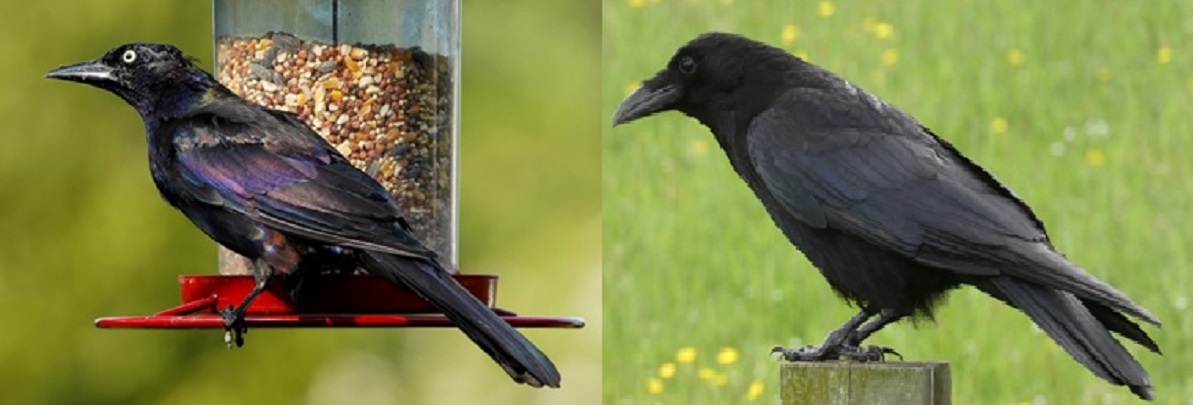While the Common Grackle and America Crow may share a lot in common, they are two very different birds. Differences in size, behavior, diet, and coloring are quick ways to spot these two birds' differences.
Grackles (or Blackbirds) and the American Crow (Corvus brachyrhynchos) share a lot in common, but these two birds are not a part of the same family.
The grackle is a part of the Icteridae family, which includes cowbirds, meadowlarks, and orioles. The American crow is a member of the family Corvidae, along with Jackdaws, Jays, and Magpies.
They both may be black birds, but a closer examination of their appearance, calls, and habitat illustrates that they are very different birds.
Appearance
Subtle differences in the size, plumage, and features of the grackle and American crow demonstrate that they are much more than simple blackbirds. The American crow is bigger, has more black features, and has a slightly different build than a blackbird. Let’s examine where these two birds differ in appearance below.
Coloring
Yes, both the grackle and American crow are black, but not the same shade of black. Irredescense, or how their black feathers catch the light, is one of the easiest giveaways.
The coloring of the crow is all black from the bottom of their feet to their beaks. While they have a very subtle iridescence, the reflection from the sunlight still makes them look black. If you spot a grackle and a crow in direct sunlight, the crow may seem black with a reddish cast, while the grackle has an electric blue hue to its black plumage.
In the shade, grackles are all black. However, the high iridescence of their feathers makes them appear electric blue in direct sunlight. While both black birds possess iridescent feathers, the grackle is far more iridescent than the crow. It may be difficult to tell them apart in the shade, but when their feathers reflect the sunlight, they look like entirely different birds.
Eyes
Another distinguishing feature between these two Passerines is their eyes.
Young crows have bright blue eyes, and this shade changes to jet-black eyes as they mature. Crows are black from top to bottom, including their eyes.
Grackles, on the other hand, have yellow eyes which stand in stark contrast against their dark feathers, and it’s one of the quickest ways to tell these two doppelgangers apart.
Size
Overall, the American crow is significantly larger than the grackle. The American crow is a large bird. From beak to tail, it measures in at an impressive 19.7″ (50 cm), while the Blackbird measures to be just 13.4 “(34 cm.) Additionally, the American crow has a much longer tail that is fan-shaped.
Overall, crows have much larger tails than grackles, except for the great-tailed grackle, which has a tail almost the same size as its entire body.
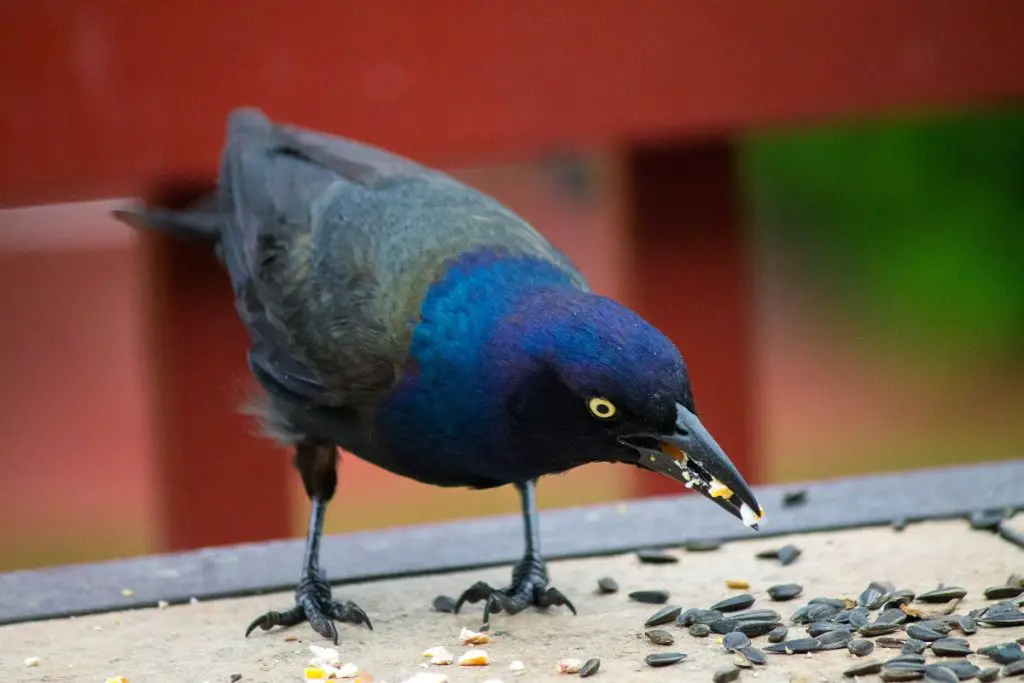
Diet
If you have backyard birdfeeders in your yard, you know that grackles are a problem. While both avians boast an omnivorous diet, grackles are attracted to the offerings at backyard birdfeeders. Grackles eat insects, but they also love seed mixes such as sunflower seeds and nuts offered at backyard birdfeeders. They can be so aggressive that large flocks of blackbirds will scare other songbirds, such as sparrows, away from feeders. Like starlings, grackles are a bit of a bully bird at birdfeeders.
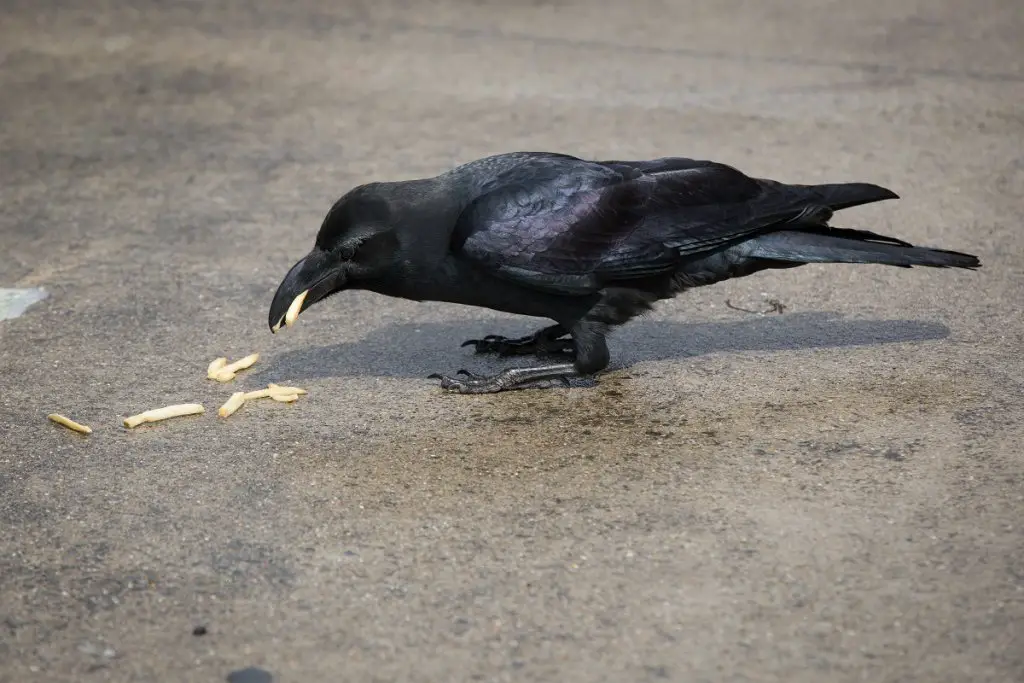
Crows, on the other hand, aren’t as much of a nuisance at backyard feeders. It’s rare to spot large groups of crows hanging around birdfeeders (thank goodness!). Crows are omnivorous and eat just about anything from bugs, berries, seeds, and nuts. They are also scavengers and nibble on carrion (roadkill) or human food like french fries and bread. Unlike blackbirds, backyard birdwatches don’t need to worry about the American crow bothering smaller songbirds at their feeders.
Habitat
At a glance, the habitat of these two avians often overlap. Both birds prefer wide open and grassy areas and are commonly found in residential areas searching for food. While they prefer wide open and heavily populated areas, they also reside in marshy regions and deciduous and conifer forests. The common grackle, however, doesn’t have as an extensive habitat range as the American crow. Grackles primarily live on the east coast and Midwest regions of the United States as far south as Florida and are rarely seen further west than the Rocky Mountains. They spend their breeding season high north in Canada and flock to wintering grounds in the United States.
The American crow is found from coast to coast- from Florida, Texas, and California. Unlike the migratory grackle, Crow partially migrate. Some flocks of crows breed as far north as Canada and migrate south to the United States. While some Crows migrate, not all do. In most areas of the United States, birdwatchers can catch a glimpse of the American crow year-round.
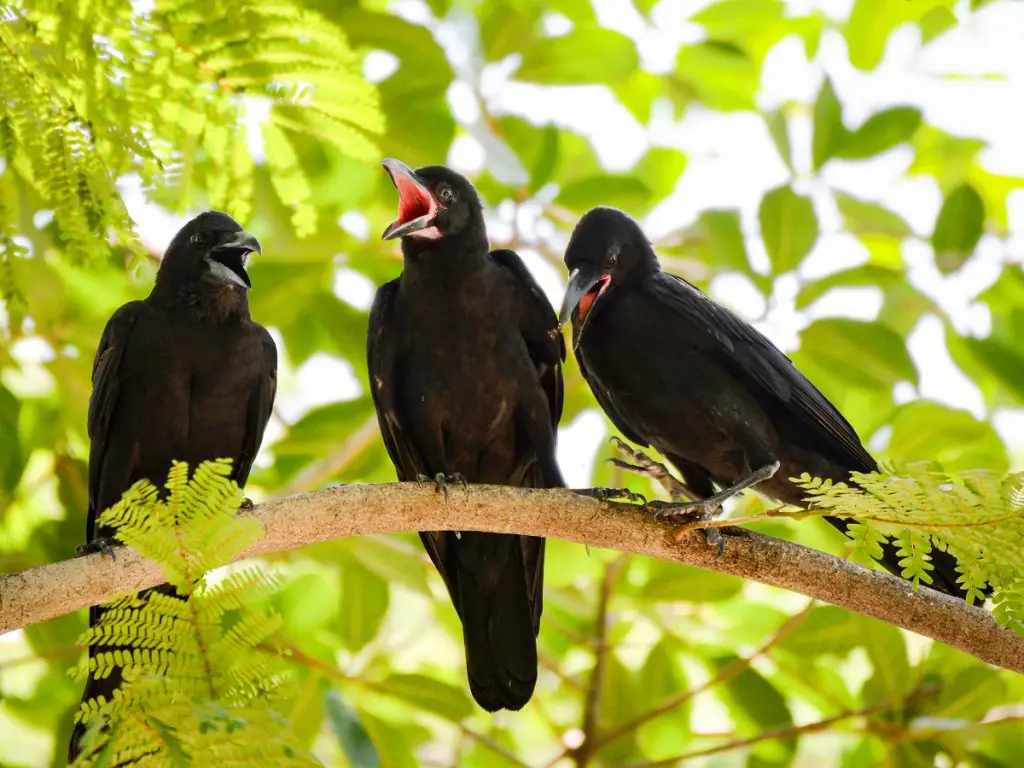
Calls
Both of these birds of North America are classified as songbirds, but they don’t exactly sing. Their vocalizations are brash. While both avians aren’t precisely lovely singers, there are apparent differences in how they communicate. The call of the American crow is unmistakable. Their caw call is loud and made while it roosts high in the tree tops. While their caw is one of their most notable bird vocalizations, the America crow has 20 different calls that range from coos, clicks, and rattles.
The vocalizations of the grackle aren’t exactly pleasing to the ear, but it’s very different from the America Crow. It’s grating, but just in a different way! The grackle emits a high-pitched squeak similar to a rusty gate. In addition to its rusty gate call, it also produces a series of whistles, and chirps, especially when alarmed.
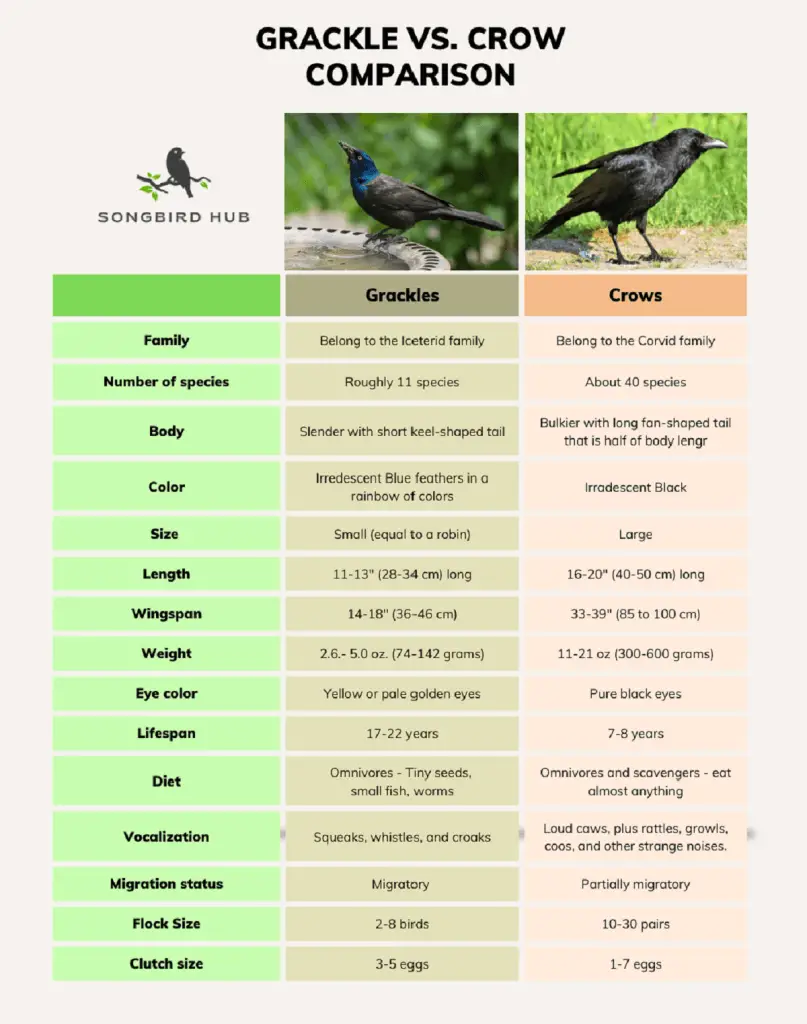
How To Quickly Spot The Difference In Grackle vs. Crow
Is it a crow or a grackle? The quickest way to spot the difference boils down to its size. Crows are big, plump birds much larger than your average backyard songbird. Grackles are much smaller (like a cowbird or blue Jay) and have more iridescent black feathers and electric yellow eyes. If you spot a group of blackbirds hanging around your birdfeeders, odds are it’s a grackle (or a cowbird, red-winged blackbird, or another member of the blackbird family). Crows are much more solitary birds and aren’t often found in large flocks. Plus, they aren’t too concerned with backyard birdfeeders!

